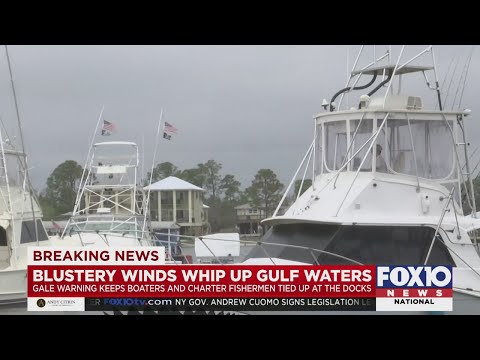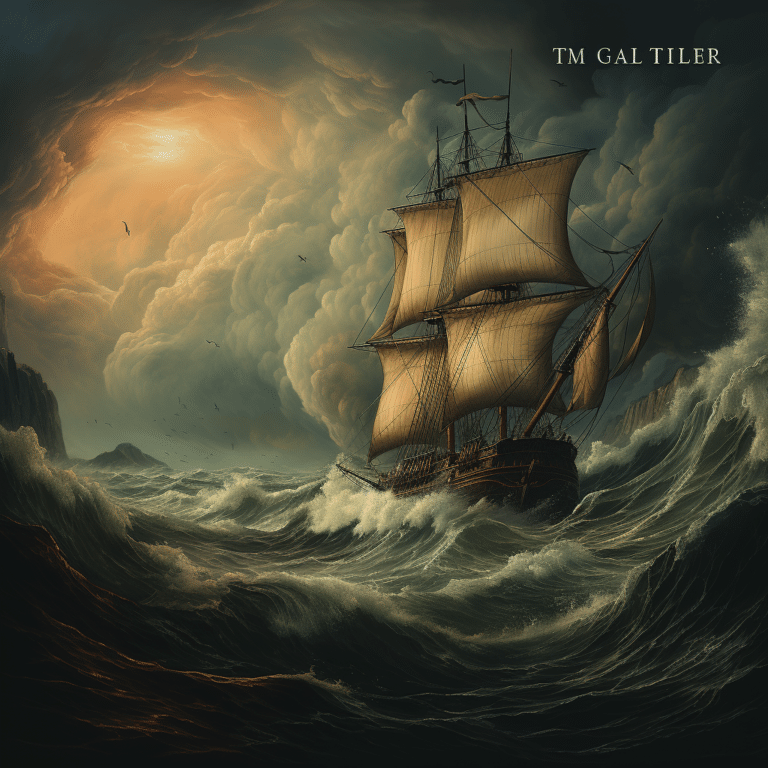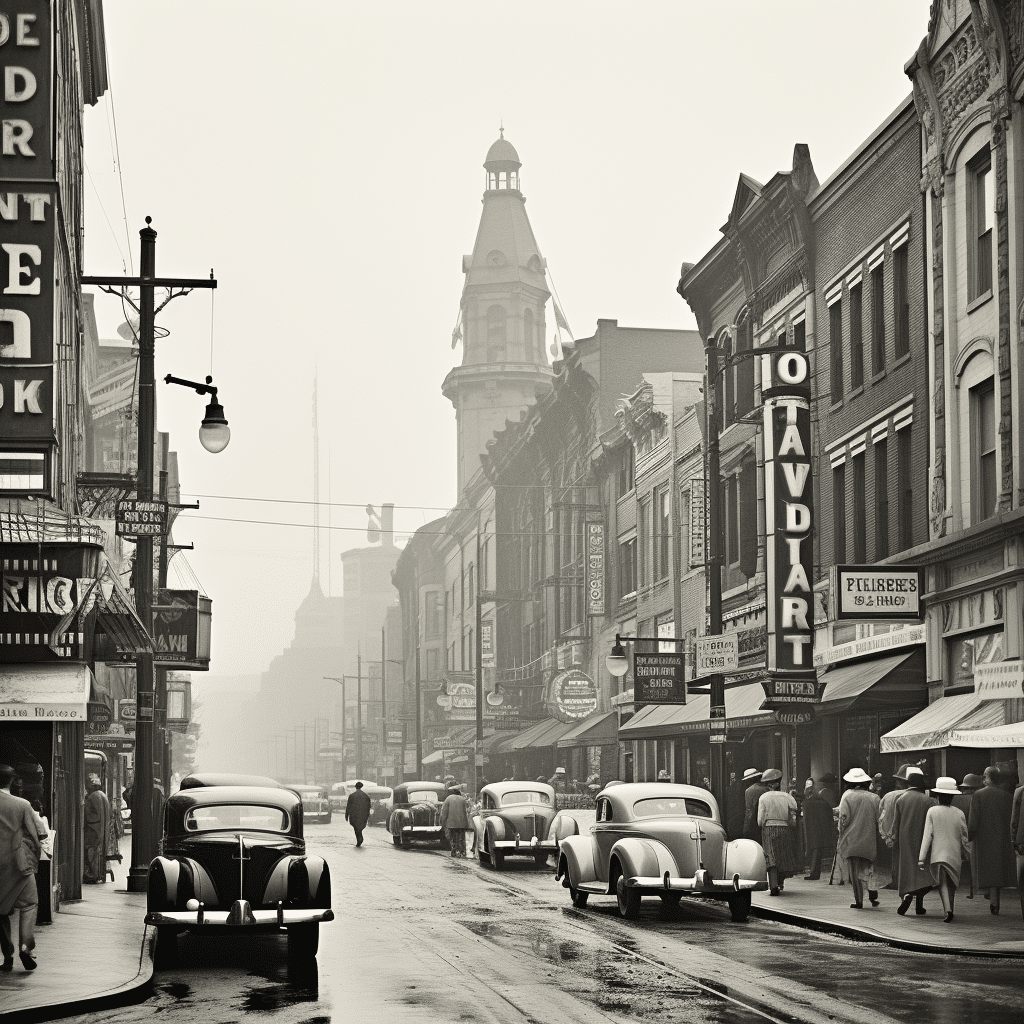As the briny sea air turns brisk and the horizon broods with the promise of fury, a gale warning crackles over the radio waves, casting a shroud of sobering reality over those who earn their keep upon the tempest-tossed waves. Understanding the gale warning meaning is not just a matter of technical knowledge, but a dance with nature’s wildest caprice. In this article, we decode the gale warning in a bid to brace the sea-faring community for the inevitable encounter with Neptune’s wrath.

Unpacking the Gale Warning Meaning for Maritime Safety
The gale warning meaning surfaces from the deep trenches of meteorological vernacular with a straight shot: a heads up of sustained winds churning between 34 to 47 knots, specifically not tied to the temper of tropical cyclones. The U.S. National Weather Service (NWS) pegs a gale as sustained surface winds, those frisky gusts running a sprint of between 63 to 87 km/h. When these blustery conditions are either brewing their stormy concoction or already wagging their tails, it is not the time for sailors to throw caution to the wind.
Here’s the skinny on what to expect:

Charting the Signs: How to Recognize an Imminent Gale
So, how does one sniff out an approaching gale? Well, sailors need to have their seafaring senses dialed in. Atmospheric pressure drops like a lead weight hinting at a bout with blusters. Wind patterns get all footloose, and cloud gatherings start rumbling like a pre-show huddle for an epic performance. Not too long ago, the Chesapeake Bay played host to a tempest that had sailboats scrambling like ants at a picnic.
Keep a weather eye out for:

| **Term** | **Definition/Description** | **Relevant Information** |
|---|---|---|
| Gale Warning | An alert issued by meteorological authorities indicating that sustained winds of 34 to 47 knots are predicted or occurring. | Not related to tropical cyclones; warns mariners of potentially hazardous conditions. |
| Sustained Winds | Steady wind speeds averaged over a period (usually one or two minutes) that range within 34 to 47 knots in the context of a gale warning. | Sustained is distinguished from gusts which are brief fluctuations of wind speed. |
| Knot (KT) | A unit of speed equal to one nautical mile (1.852 km) per hour. | Used in maritime and aviation contexts; 1 knot = 1.15078 miles per hour. |
| Gust | A sudden increase in wind speed that lasts for a few seconds to minutes. | Typically varies by 10 knots or more between the peaks and lulls; can occur during a gale. |
| Nautical Context | Pertains to activities, navigation, and conditions at sea. | Gale warnings are particularly important for mariners to ensure the safety of navigation and operations at sea. |
| U.S. National Weather Service (NWS) | The federal agency that provides weather, water, and climate data and forecasts and warnings. | Responsible for issuing gale warnings in the United States; part of the National Oceanic and Atmospheric Administration (NOAA). |
| Gale (as a noun) | A very strong wind, more intense than a breeze but less severe than a storm, especially as affecting nautical activities. | Not to be confused with “hurricane,” which is a more severe weather event with winds of 74 miles per hour or greater and specific to tropical cyclones. |
| Hurricane | A severe tropical cyclone with winds of 119 km/h (74 miles per hour) or greater. | Usually classified on the Saffir-Simpson Hurricane Wind Scale ranging from Category 1 (weakest) to Category 5 (strongest). Not directly related to gale warnings. |
The Gale Warning Meaning Interpreted by Veteran Sailors
Old salts clued into the gale warning meaning can smell the storm on the wind. They trade tales of close shaves and the times the sea tested their mettle. “It’s the kind of wind that’ll steal the breath from your lungs if you’re not respectful,” says Cap’n Marty, a gnarly local who’s seen more squalls than most have had hot dinners. These sailors’ decisions, made in the clinch, are a compass for the greenhorns.
They’ll advise you to:

Navigational Strategies When a Gale Warning Sounds
Clarity in chaos becomes the prevailing wind when a gale warning is sounded. Mariners deploy their trusted methods – battening down the hatches, reefing sails, or pointing the bow to ride the waves like a surfer shooting the curl. Technology has become a steadfast first mate, with GPS and satellite forecasting proving invaluable. Tools like the Automatic Identification System (AIS) keep ships from playing a dangerous game of bumper boats.
Maritime SOP includes:

The Psychological Impact of Gale Warnings on Sailors
As the unseen pressure mounts, the crew’s mettle is tested, doesn’t matter if you’re dressed in erotic lingerie or oilskins. There’s more to riding out a gale than just brawn and bravado. Shipmates band together, routines become sacrosanct, and the mind’s focus becomes as sharp as a nipple clamp’s pinch. It’s in these cresting waves that fortitude is forged and the bonds of fellowship are tempered.
Crews prepare by:
Comparing Past and Recent Gale Warnings: Evolving the Prediction Models
Flipping through the logs, it’s clear that predicting the wrath of Eurus has come a long way. The accuracy of gale warnings has leaped forward, with mathematical models now nimbly sidestepping chaos theory’s butterfly effect. With satellite eyes in the sky and ever-sharpening algorithms, the ghosts of old sailor’s tales are laid to rest with every successful forecast.
The evolution is marked by:
Policy and Protocol: Governing Bodies and Their Role in Gale Warnings
Like a seasoned captain at the helm, various governing bodies take charge, issuing gale warnings with the authority of a sea god’s decree. The NWS, World Meteorological Organization (WMO), and maritime safety committees collectively hoist the flags of warning, their protocols re-forged in the aftermath of tempests past. They chart courses that ensure no ship takes to the waves unwittingly.
In the bureaucracy of storm surveillance, you’ll find:
Embracing the Storm: The Bright Side of Gale Warnings
In the grand scheme, a gale’s brew isn’t solely a concoction of chaos. These maritime maelstroms scatter seeds of nutrients across the brine, fostering oceanic life. Like a good scrub, they clear the air, and from an ecological standpoint, they’re the ocean’s landscapers. Moreover, stories of gales have swelled the sails of maritime lore for eons, becoming the crucibles for developing seafaring knowledge and tech.
Gale warnings bear gifts:
In tying off the gale warning meaning, it is clear that the dance with the wind’s might is a testament to mariner’s savvy and science’s reach. The importance of heeding nature’s headstrong winds remains, yet sailors today are far better equipped, in mind and mettle, to embrace their tempestuous tango. With eyes wide open and sails trimmed in anticipation, the only true folly lies in ignoring the wails of the warning.
Unraveling the Gale Warning Meaning
As seafarers scan the horizon, the term “gale warning” can send shivers down their spines quicker than a cold splash of briny water. But ahoy, let’s take a breezy dive into the trivia surrounding this crucial warning! The gale warning meaning indicates that winds of significant strength, usually from 34 to 47 knots, are expected, which could make even experienced sailors consider docking early. But, stick with me here, this isn’t a signal to batten down the hatches and read up on What Is The full meaning Of google; it’s more about securing the deck and reefing the sails.
Speaking of strong winds, did you know that the entire Ghosts Of Mississippi cast faced a different kind of gale force while filming the courtroom drama? Yep, they navigated through the stormy trials of portraying historical figures, which required a sturdy hold on character just as a sailor grips the helm in a gale. Moreover, someone who knows all about the high-pressure performance is Gino Cosculluela, a dancer whose moves could rival the power and grace of a tempest at sea.
Now, weathering through trivia might seem less intense than a sailor’s squall, but stick with me; it gets more intriguing. Just like gale warnings signal turbulent times ahead, did you ever wonder if there’s something to alert you about the ups and downs of fashion? Sort of like a cautionary tale before walking into a Shoe Palace and getting blown away by the plethora of choices? And let’s not get started on how fashion can sometimes throw us curveballs as wild as the idea of nipple Clamps turning into a fashion statement. Sure, it’s edgy, like braving gales, but it certainly adds an unexpected twist to the term ‘fashion risks.
In conclusion, while Sorb3t might sound like a sherbet you’d enjoy after bracing the high seas, it’s actually the sweet treat of news and entertainment that can brighten any cloudy day. So, as you anchor down this trivia, remember the gale warning meaning is more than just sailor speak; it’s a reminder of the exhilarating and unpredictable nature of the world, teaching us to prepare for the gusts and enjoy the calmer winds when they come.

What does gale warning mean?
– Hold onto your hats, folks! A gale warning means things are about to get blustery with sustained winds whipping up a frenzy at 34-47 knots. Not your garden-variety breeze, and definitely not shaking hands with tropical cyclones – this warning’s flying solo!
Is gale a strong wind?
– Sure as eggs is eggs, a gale is no slouch in the wind department! It’s what you’d call a real blowhard, with winds strong enough to make sailors take note and landlubbers batten down the hatches.
Is gale stronger than Hurricane?
– Oh boy, now that’s an apples and oranges kind of question! A gale can huff and puff, but it’s not quite in the same league as a hurricane, which cranks up winds to hair-raising speeds of 74 mph or more – that’s a whole other ball game!
What wind speed is gale?
– When it comes to gale-force winds, you’re talking about a serious blow of 34 to 47 knots on the old windometer. That’s enough oomph to get your wind chimes performing a symphony!
What triggers a gale warning?
– So, what gets the meteorologists’ spidey-senses tingling for a gale warning? It’s when they spy those winds gearing up to gallop at 34 knots or more, and they know it’s no flash in the pan – those gusts are sticking around for a while.
Is a gale warning worse than a storm warning?
– Hmm, is a gale warning worse than a storm warning? Well, it’s kinda like comparing stubbing your toe to a full-on faceplant. Both ruin your day but in different ways. A storm warning can mean even more mayhem is on the way, with potential for a hefty mix of wind and weather woes.
How bad is a gale tornado?
– Now, a gale tornado sounds like a real monster mash, but it’s not a term that meteorologists would tip their hats to. Tornados are their own breed of twisty trouble, though a gale can certainly set the scene for all sorts of wind-based shenanigans.
Is a gale like a hurricane?
– Is a gale like a hurricane? That’s a no-can-do, compadre. A gale’s a hefty gust, sure, but a hurricane’s the Big Kahuna of storms with all the trimmings: killer winds, torrential rains, and the sort of tantrum Mother Nature throws when she’s really upset.
Can a gale cause a tornado?
– Can a gale cause a tornado? Well, they’re distant cousins in the wild family of winds. A gale, by itself, can’t whip up a tornado, but it’s all part of the chaotic dance in the atmosphere that could spin into a twister if conditions are just right.
How windy is too windy to walk?
– When it’s blowing a hoolie out there, and you’re wondering how windy is too windy to walk, let’s just say if you’re leaning into the wind like a Michael Jackson move, it might be time to take the bus!
Is 25 mph wind strong for driving?
– Is 25 mph wind strong for driving? You betcha – it’s enough to make your ride shimmy like a belly dancer, so keep a firm grip on the wheel and watch for flying witches à la Wizard of Oz.
What does 10 mph wind look like?
– What does 10 mph wind look like? Picture a gentle breeze that’s just enough to rustle the leaves and tickle your fancy – no danger of being blown off your feet!
Is it safe to drive in 30 mph winds?
– Taking the wheel in 30 mph winds? It’s doable, but treat it like a tricky dance partner – stay alert, keep your hands steady, and don’t let the wind cut in.
Is 15 mph too windy for beach?
– Is 15 mph too windy for beach? Depends on your taste for airborne sand sandwiches and hair that looks like you’ve been electrified – anything more than a gentle zephyr can turn your beach day into a blast zone!
Is 20 mph wind bad?
– Is 20 mph wind bad? That depends on your definition of bad. If you’re flying a kite or your hairstyle’s channeling the wild look, then it’s aces! But for an umbrella? Not so much – unless you fancy doing your Mary Poppins impression.
Can you drive in Gale Force Winds?
– Can you drive in gale-force winds? Sure, if you fancy your car impersonating a boat in choppy seas. Best advice: unless you’ve got nerves of steel and a grip like King Kong, maybe sit this dance out until the wind calms its farm.
How bad is a gale tornado?
– How bad is a gale tornado? Well, since a “gale tornado” isn’t a term the weather buff’s use, you can rest easy that such a creature isn’t coming to huff, puff, and blow your house down.
Can a gale cause a tornado?
– Can a gale cause a tornado? In the grand tapestry of weather, a strong gale sets the stage, but it takes a special mix of atmospheric chaos to cook up a tornado – so while related, it’s not a direct cause-and-effect.
What is the difference between a gale and a tornado?
– What’s the difference between a gale and a tornado? Well, strap in! A gale is like a heavyweight boxer – throws a mean punch with winds up to 47 knots, but a tornado? That’s a spinning top of destruction on steroids, with winds that can turn straw into a lethal weapon. Not exactly two peas in a pod!



























